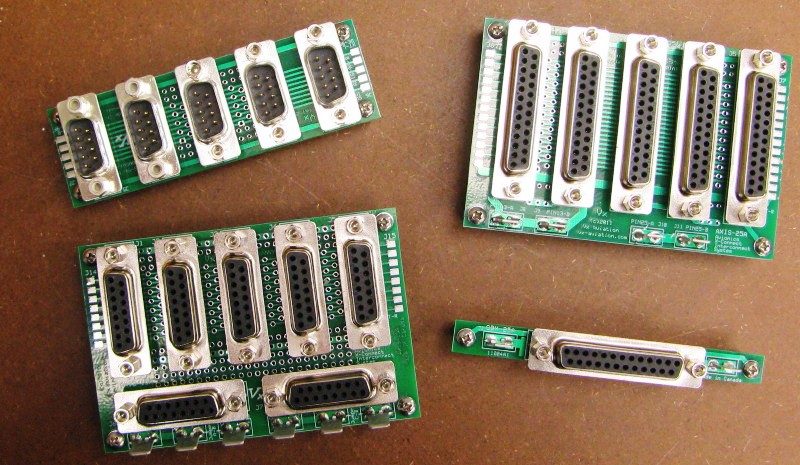vlittle
Well Known Member
This is a heads-up on a potential wiring hub product from Vx Aviation. I'm gathering feedback on it's feasibility, so if you like what you see, please contact me. Prototypes will be in house Dec. 27, and a product release decision will be made in January.
The Problem:
Connecting multiple RS-232 circuits to multiple instruments quickly becomes a rats-nest of wires and changes and upgrades require cutting and re-routing wires. Debug is difficult because there is no access to the signals.
A secondary problem is how to provide the distribution of instrument grounds and any voltage buses in a convenient, low cost fashion.
The preferred interconnect method is to use common low, easy to work with D-Sub connectors.
The Proposed Solution:
The AXIS-15A wiring hub. The following is an example of how it works:
Original design (this is for Dynon, but the concept works for GRT, AFS, MGL and others):

The same design using the AXIS-15A wiring hub:

What the wiring hub looks like. Actual size is 3.8" x 2.5".

And a sketch up of the typical application, plus ground and voltage distribution:

Here's what it does:
AXIS-15A
Supports:
-The connection of EFIS system serial buses together. In the example, the SkyView system's 5 serial ports, plus the SkyView GPS power/ground connections. This occupies 12 of the 15 signal buses on the backplane, and two connector positions.
-Multiple instrument connections without wire splices. Normally, only one connector position is required to support all of the connected instruments unless there is a need to fan-out to more than one instrument per signal by using additional connectors. Some applications can allocate the unused signals available on the backplane to communicate independently of the EFISs.
-Facilitate adds, changes and upgrades. Simply by swapping connector pins to other positions, a wiring change can be made in a few minutes without cutting and splicing.
-Simple access for debugging.
-Convenient ground or power busing for avionics instruments using dedicated 15-pin DSub connectors and fast-on tabs.
-The ability to add small circuits on board by providing signal access and a prototyping area. For example, signal monitoring lamps can be wired in to provide visual indication of signal status.
Thanks! Please contact me if you have any feedback or want to be on the product notification list.
Vern Little
The Problem:
Connecting multiple RS-232 circuits to multiple instruments quickly becomes a rats-nest of wires and changes and upgrades require cutting and re-routing wires. Debug is difficult because there is no access to the signals.
A secondary problem is how to provide the distribution of instrument grounds and any voltage buses in a convenient, low cost fashion.
The preferred interconnect method is to use common low, easy to work with D-Sub connectors.
The Proposed Solution:
The AXIS-15A wiring hub. The following is an example of how it works:
Original design (this is for Dynon, but the concept works for GRT, AFS, MGL and others):

The same design using the AXIS-15A wiring hub:

What the wiring hub looks like. Actual size is 3.8" x 2.5".

And a sketch up of the typical application, plus ground and voltage distribution:

Here's what it does:
AXIS-15A
Supports:
-The connection of EFIS system serial buses together. In the example, the SkyView system's 5 serial ports, plus the SkyView GPS power/ground connections. This occupies 12 of the 15 signal buses on the backplane, and two connector positions.
-Multiple instrument connections without wire splices. Normally, only one connector position is required to support all of the connected instruments unless there is a need to fan-out to more than one instrument per signal by using additional connectors. Some applications can allocate the unused signals available on the backplane to communicate independently of the EFISs.
-Facilitate adds, changes and upgrades. Simply by swapping connector pins to other positions, a wiring change can be made in a few minutes without cutting and splicing.
-Simple access for debugging.
-Convenient ground or power busing for avionics instruments using dedicated 15-pin DSub connectors and fast-on tabs.
-The ability to add small circuits on board by providing signal access and a prototyping area. For example, signal monitoring lamps can be wired in to provide visual indication of signal status.
Thanks! Please contact me if you have any feedback or want to be on the product notification list.
Vern Little






